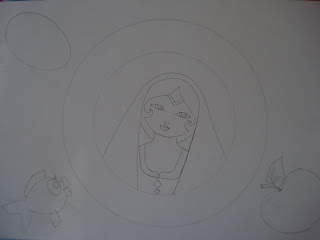how happy birthday is said:
 Afrikaans - Veels geluk met jou verjaarsdag!
Afrikaans - Veels geluk met jou verjaarsdag!Albanian - Urime ditelindjen!
Alsatian - Gueter geburtsdaa!
Amharic - Melkam lidet!
Arabic - Eed melad said
Armenian - Taredartzet shnorhavor! or Tsenund shnorhavor!
Assyrian - Eida D'moladukh Hawee Brikha!
Australia - Happy Birthday
Austrian-Viennese - Ois guade winsch i dia zum Gbuadsdog!
Aymara (Bolivia) - Suma Urupnaya Cchuru Uromankja!
Basque - Zorionak!
Belauan-Micronesian - Ungil el cherellem!

Bengali (Bangladesh/India) - Shuvo Jonmodin!
Bislama (Vanuatu) - Hapi betde! or Yumi selebretem de blong bon blong yu!
Brazil - Feliz Aniversario, Feliz Feliz Aniversario
Breton - Deiz-ha-bloaz laouen deoc'h!
Bulgarian - Chestit Rojden Den!
Cambodian - Som owie nek mein aryouk yrinyu!
Canada - Happy Birthday
Catalan - Per molts anys! or Bon aniversari!
Chamorro - Biba Kumpianos!
China - Sheng Ri Kuai Le or Saang yaht faai lokik
Croatian - Sretan Rodendan!
Czech - Vsechno nejlepsi k Tvym narozeninam!
Danish - Tillykke med fodselsdagen!
Dutch - Hartelijk gefeliciteerd metje verjaardag
Ecuador - Feliz Dia del Santo
Egypt - Kule Sana Winta Tayib (boy)Kule
 Sana Wintie Tayyiba (Girl)
Sana Wintie Tayyiba (Girl)English - Happy Birthday!
Esperanto - Felichan Naskightagon!
Estonian - Palju onne sunnipaevaks!
Euskera - Zorionak zure urtebetetze egunean!
Faroes (Faroe island) - Tillukku vid fodingardegnum!
Farsi - Tavalodet Mobarak!
Finnish - Hyvaa syntymapaivaa!
France - Joyeux Anniversaire!
French-canadian - Bonne Fete!
Frisian - Lokkiche jierdei!
Gaelic - Co latha breith sona dhut!
Galician (Spain) - Ledicia no teu cumpreanos!
Germany - Alles Gute zum Geburstag orHerzlichen Glückwunsch zum Geburtstag
Georgian - Gilotcav dabadebis dges!
Ghana - Happy BirthdayMedzi dzigbe njkeke nyuie no wo (ewe tribal language)
Great Britain - Happy Birthday
Greek - Eftixismena Genethlia! or Chronia Pola!
Greenlandic - Inuununnu pilluarit!
Gronings (Neth
 erlands) - Fielsteerd mit joen verjoardag!
erlands) - Fielsteerd mit joen verjoardag!Gujarati (India) - Janma Divas Mubarak!
Hawaiian - Hau oli la hanau!
Hebrew - Yom Huledet Same'ach!
Hiligaymon (Philippines) - Masadya gid nga adlaw sa imo pagkatawo!
Hindi - Janam Din Ki Badhai
Hungarian - Boldog szuletes napot
Icelandic - Til hamingju med afmaelisdaginn!
India - Sal Girah Mubarak
Indonesian - Selamat Ulang Tahun!
Irish - gaelic - La-briethe mhaith agat! or Briethla Shona Dhuit!
Israel - Yom Holedet Sameach
Italian - Buon compleanno! or Bun Cumpleani!
Japanese - Otanjyobi omedeto Gozaimasu!
Javaans-Indonesia - Slamet Ulang Tuanmoe!
Korean - Saeng il chuk ha ham ni da!
Latin - Fortuna dies natalis!
Latvian - Daudz laimes dzimsanas diena!
Lithuanian - Sveikinu su gimtadieniu! or Geriausi linkejimai gimtadienio proga!
Macedonian - Sreken roden den!
Malaysian - Selamat Hari Jadi!
Maltese - Nifrahlek ghal gheluq sninek!
Maori - Kia Huritau ki A Koe
Mexico - Feliz Cumpleanos
Mongolian -
 Torson odriin mend hurgee!
Torson odriin mend hurgee!Native American - Haptee Hocuenera Hinigiren
The Netherlands - Van Harte Gefeliciteerd orHjertelig til lykke medfodselsdagen
Nigeria - Eku ojobi
Norway - Gratulere Med Daged
Persian - Tavalodet Mobarak!
Peru - Feliz Cumpleanos
Polish - Wszystkiego Najlepszego! or Wszystkiego najlepszego z okazji urodzin!
Portuguese (Brazil) - Parabens pelo seu aniversario!
Portuguese - Felix Aniversrio! or Parabens!
Quebec - Bonne Fete

















.jpg)




